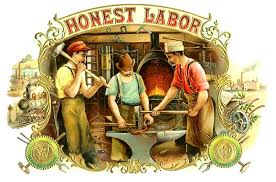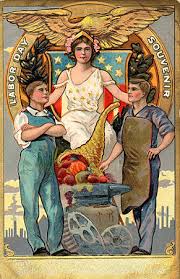As we come to Labor Day 2014, it is time to consider where we have come since last year’s Labor Day and where we might be going. Here are three truths and a lie about the job market in California.
 Truth 1- California is in the midst of one of its longest employment expansions since 1960: The California economy has now gained nearly 1.4 million payroll jobs since February 2010, and at 53 months is in the midst of the fifth longest employment expansion since 1960. The longest expansion still is the 113 months from January 1960 to December 1969, followed by expansions of 91 months from 1982-1990 and 94 months from 1993-2001. We still have a way to go to reach these numbers, but while monthly numbers have varied, the trend of the past year has been steady gains.
Truth 1- California is in the midst of one of its longest employment expansions since 1960: The California economy has now gained nearly 1.4 million payroll jobs since February 2010, and at 53 months is in the midst of the fifth longest employment expansion since 1960. The longest expansion still is the 113 months from January 1960 to December 1969, followed by expansions of 91 months from 1982-1990 and 94 months from 1993-2001. We still have a way to go to reach these numbers, but while monthly numbers have varied, the trend of the past year has been steady gains.
Truth 2-The employment gains are helping all groups among the unemployed, including the long term unemployed: In March 2007, prior to the Great Recession, the number of long term unemployed (those unemployed 27 weeks or longer) stood at around 145,000, representing 16.8% of the total unemployed in the state. By March 2010, the long term unemployed in California had increased dramatically to 843,000, representing over 39% of the total unemployed. Since February 2010, the number of unemployed has fallen steadily to 1,588,700 in May of this year, and the number of long term unemployed also has fallen steadily to 604,300. This number is still well above pre-Great Recession times but going in the right direction in the past year.
Truth 3: The employment gains are spread among sectors: The California economy gained 323,600 payroll jobs from July 2013 through July 2014, and the gains were widely distributed among sectors. Nine of the eleven non-farm sectors gained payroll jobs in this period, led by Professional and Business Services (91,800 jobs), Educational and health services (85,400 jobs) and Trade, Transportation and Utilities (49,000 jobs). Only Financial Activities and Manufacturing showed losses, and these losses were minimal.
 Lie: Concerns about employment numbers nationwide on Labor Day 2014 are vastly overblown, the propaganda of the Tea Party, the 1%, and the Koch Brothers: A narrative has grown in 2014 on the left (Salon, Huffington Post, Vox) that questions about employment numbers in California and nationwide are overblown, the propaganda of forces on the right. This is a lie.
Lie: Concerns about employment numbers nationwide on Labor Day 2014 are vastly overblown, the propaganda of the Tea Party, the 1%, and the Koch Brothers: A narrative has grown in 2014 on the left (Salon, Huffington Post, Vox) that questions about employment numbers in California and nationwide are overblown, the propaganda of forces on the right. This is a lie.
The payroll numbers tell a part of the story as do the unemployment rate numbers. But only a part. We have written often at Fox & Hounds the past few years about the structural employment shifts in California and nationwide, particularly the rise of part-time employment, contingent employment and independent contracting, as well as about the disproportional number of lower wage jobs. Additionally, on Labor Day 2014 the labor force participation rate nationwide stands near its lowest level in more than thirty years–due only partly to the aging of the workforce and to a greater extent to exodus of prime-age workers from actively searching for employment.
To identify the employment weaknesses is not partisan, and the cheerleading by the publications noted above and others on the left is an embarrassment. Employment policy under both national Republican and Democratic administrations in the 2000s has gone way off-track.
This Labor Day posting is not the place for a full discussion of employment policy– and the range of government and tax policies that today discourage job creation and entrepreneurship (more to come). But it is worth pointing out today a research paper issued earlier this summer that should give us all pause. The research paper , “Declining Business Dynamism in the United States”, was written by economist Robert Litan of Brookings and Ian Hathaway of Ennsyte Economics. They studied entrepreneurial activity from 1978 to 2011. During this time, such activity dropped significantly: start-ups falling from 15% of firms to 8%. The drop occurred even as the internet opened up new opportunities for start-ups. A companion research paper found older firms, 16 years and older, playing a far greater role today than in the past in generating employment.
The economists do not assign “blame” for this decline in entrepreneurship. But it is difficult not to see it connected to government and tax disincentives to private activity. Given the pre-eminence that entrepreneurship has played in our post World War II California economy, any decline in the willingness of Californians to start business ventures should jolt any complacency we might have on Labor Day 2014.

